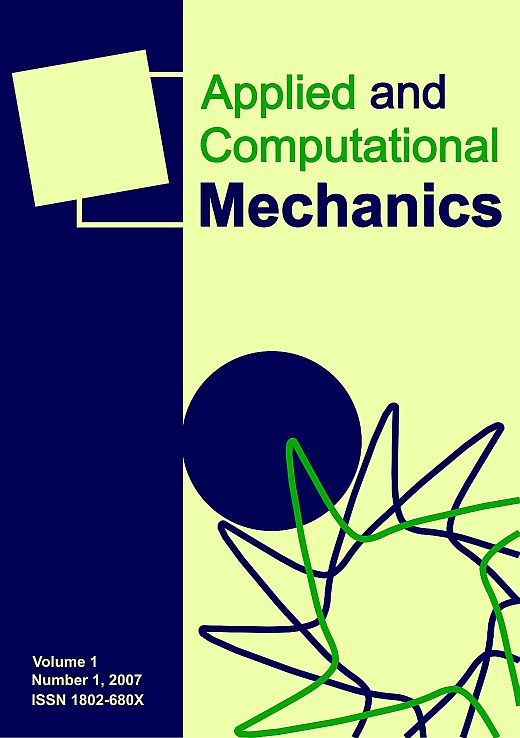Modelling of the mechanical behaviour of porcine carotid artery undergoing inflation-deflation test
Keywords:
carotid artery, inflation-deflation test, modelling, hyperelasticity, parameters identificationAbstract
Samples of porcine carotid artery are examined using Tissue bath MAYFLOWER, Perfusion of tubular organs Version, Type 813/6. Pressure-diameter diagrams are obtained for fixed axial extension and volumetric flow rate. Finite element analysis of the experiment, performed using COMSOL software, indicates a negligible effect of given flow rate on the mechanical response of the tested sample. Also the effect of clamped ends is shown to be local only. Hence, static analysis in MATLAB software is performed considering the arterial segment as an incompressible hyperelastic axisymmetric tube. Residual stress at the load-free configuration is taken into account resulting in the overall stiffening of the model. Comparison of theoretical and experimental pressure-diameter curves results in the identification of material parameters using the least square method. In addition to classical hyperelastic models, such as the neo-Hookean and the Fung’s exponential, two-scale model mimicking arrangement of soft tissue is considered.Downloads
Published
30-Dec-2010
Issue
Section
Articles
License
Copyright (c) 2016 Applied and Computational Mechanics

This work is licensed under a Creative Commons Attribution 4.0 International License.
How to Cite
[1]
J. Vychytil, F. Moravec, P. Kochová, J. Kuncová, and J. Švíglerová, “Modelling of the mechanical behaviour of porcine carotid artery undergoing inflation-deflation test”, APPL COMPUT MECH, vol. 4, no. 2, Dec. 2010, Accessed: Dec. 18, 2025. [Online]. Available: https://acm.kme.zcu.cz//article/view/114







